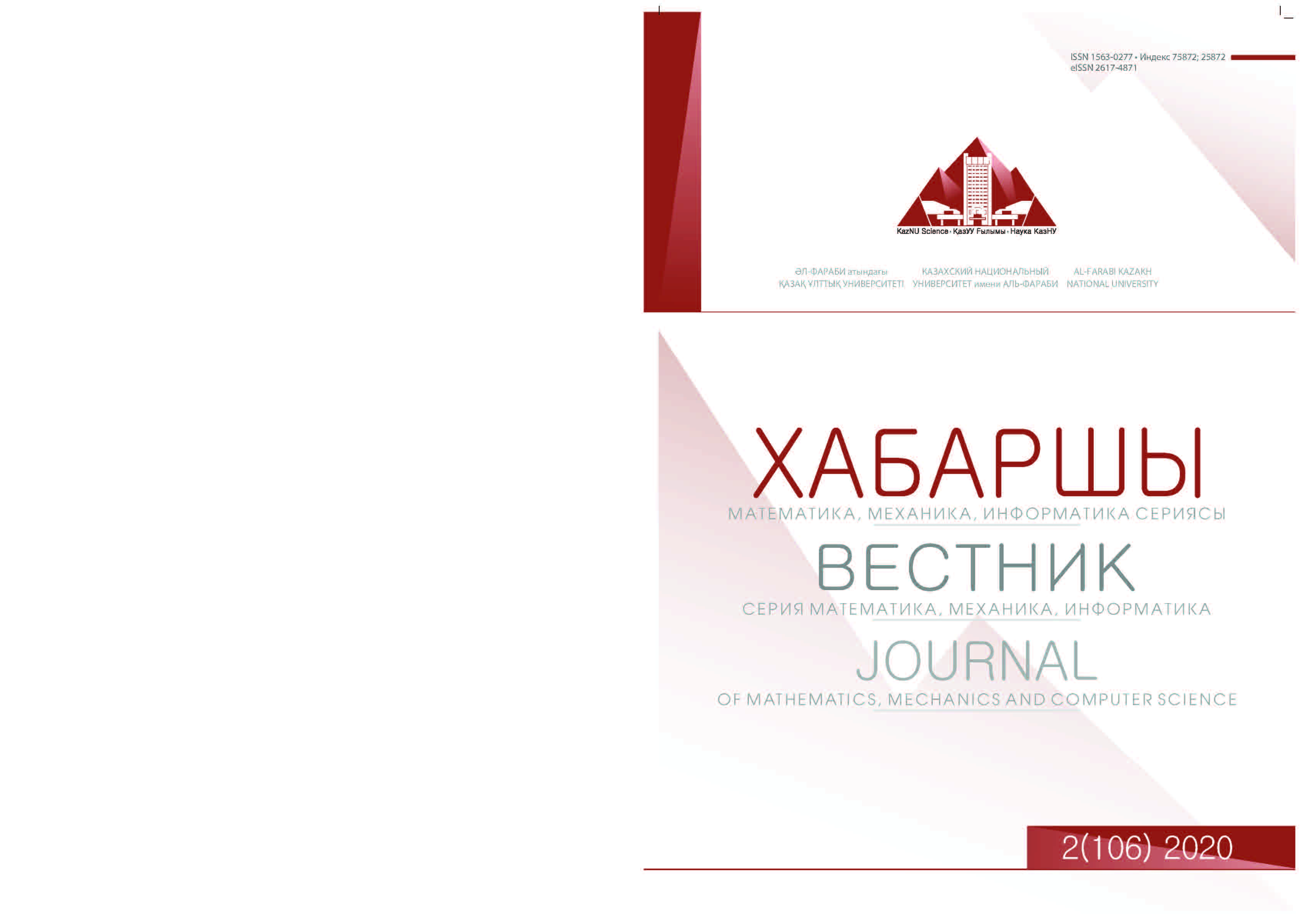The non-commutative hardy-littlewood maximal operator on non-commutative lorentz spaces
DOI:
https://doi.org/10.26577/JMMCS.2020.v106.i2.03Keywords:
Cesaro operator, Hardy-Littlewood maximal operator, Lorentz spaceAbstract
In this work we study the non-commutative Hardy-Littlewood maximal operator on Lorentz spaces of $\tau$-measurable operators.
Non-commutative maximal inequalities were studied, in particular, in \cite{MJ1, JQ, TM}. Another version of the (non-commutative)
Hardy-Littlewood maximal operator was introduced by T. Bekjan \cite{TB}. Later J. Shao investigated the Hardy-Littlewood maximal operator
on non-commutative Lorentz spaces associated with finite atomless von Neumann algebra (see \cite{Sh}). Namely, for an operator $T$
affiliated with a semi-finite von Neumann algebra $\mathcal{M},$ the Hardy-Littlewood maximal operator of $T$ is defined by
$$MA(x)=\sup\limits_{r>0}\frac{1}{\tau\left(E_{[x-r, x+r]}\left(|A|\right)\right)}\tau\left(|A|E_{[x-r, x+r]}\left(|A|\right)\right),
\,\,x\geq0.$$
While the classical Hardy-Littlewood maximal operator of a Lebesgue measurable function $f:\mathbb{R}\rightarrow\mathbb{R}$, denoted by
$Mf(x)$, is defined as
$$Mf(x)=\sup\limits_{r>0}\frac{1}{m([x-r, x+r])}\int\limits_{[x-r,x+r]}|f(t)|dt,$$
where $m$ is a Lebesgue measure on $(-\infty,\infty)$ \cite{SW}. In view of spectral theory, $|A|$ is represented as
$$|A|=\int_{\sigma(|A|)}tdE_{t},$$
and $MA(|A|)$ is represented as $MA(x).$ Thus, for the operator $A,$ Bekjan’s consideration is that $MA(|A|)$ is defined as the operator
analogue of the Hardy-Littlewood maximal operator in the classical case. Our purpose is to investigate the non-commutative
Hardy-Littlewood maximal operator $M$ in the sense of T. Bekjan (see \cite{TB}).
In particular, we obtain boundedness of the non-commutative Hardy-Littlewood maximal operator in non-commutative Lorentz spaces.
References
[2] M. Junge, Q. Xu, "Non-commutative maximal ergodic theorems", J. Am. Math. Soc. Vol. 20, No 2 (2007): 385 439.
[3] T. Mei, "Operator valued Hardy spaces", Mem. Am. Math. Soc. Vol. 188, No 881 (2007): 64.
[4] T. N. Bekzhan, "Hardy-Littlewood maximal function of r-measurable operators", J. Math. Anal. Appl. 322 (2006): 87-96.
[5] J. Shao, "Hardy-Littlewood maximal function on noncommutative Lorentz spaces", Journal of Inequalities and Applica-
tions. (2013): 384.
[6] S. Krein, Y. Petunin and E. Semenov, Interpolation of linear operators (Amer. Math. Soc. : Providence, R.I., 1982), 375.
[7] C. Bennett and R. Sharpley, Interpolation of Operators (Pure and Applied Mathematics: 129, Academic Press, 1988),
469.
[8] L. Grafakos, Classical Fourier analysis (Springer: 2nd ed. , 2008), 638.
[9] S. Lord, F. Sukochev and D. Zanin, Singular traces. Theory and applications (Berlin: De Gruyter Studies in Mathenatics.
De Gruyter, 2013), 452.
[10] E. Stein and G. Weiss, Introdunction to Fourier analysis on Euclidean spaces ( Princeton: Princeton University Press,
1971), 312.
[11] J. Soria and P. Traducere, "Optimal rearrangement invariant range for Hardy-type operators", Proc. ofthe Royal Soc. of
Edinburgh. 146A (2016): 865-893.
[12] J. Soria and P. Tradacete, "Characterization of the restricted type spaces R(X)", Math. Ineq. Applic. 18 (2015): 295-319.
[13] T. Fack and H. Kosaki, "Generalized s-numbers of r-measurable operators", Pacific J. Math. 123, 2 (1986): 268-300.
[14] Y. Nessipbayev and K. Tulenov, "The non-commutative Hardy-Littlewood maximal function on symmetric spaces of
T-measurable operators [electronic resource]", (2020). arXiv: 2002.04413.




